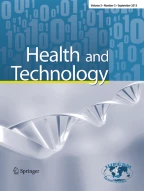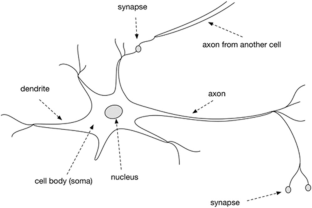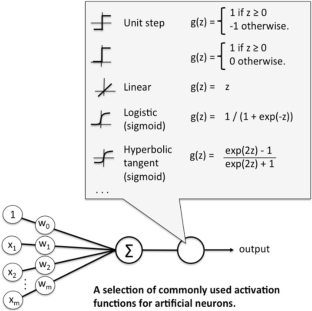Artificial neural networks in medicine

In the past several decades, the intricate neural networks of the human brain have inspired the further development of intelligent systems. Many disciplines, including the complex field of medicine, have taken advantage of the useful applications of artificial neural networks (ANNs). To review and provide a comprehensive introduction to artificial neural networks, as well as a general discussion of its recent applications in the medical field. A search of the PsycINFO, Google Scholar, PubMed, and University of Rhode Island Library databases from 1943 to 2017 was conducted for articles on artificial neural networks to describe (1) general introduction, (2) historical overview, (3) modern innovations, (4) current clinical applications, and (5) future applications of the field. The relevance of artificial neural networks has increased significantly over the past few decades as technology advances. Evidence from several studies demonstrates that artificial neural networks can be used to not only aid in the diagnosis, prognosis and treatment of major diseases, but can also aid in the advancement of the environment and community.
This is a preview of subscription content, log in via an institution to check access.
Access this article
Subscribe and save
Springer+ Basic
€32.70 /Month
- Get 10 units per month
- Download Article/Chapter or eBook
- 1 Unit = 1 Article or 1 Chapter
- Cancel anytime
Buy Now
Price includes VAT (France)
Instant access to the full article PDF.
Rent this article via DeepDyve



Similar content being viewed by others

Artificial Neural Networks in Biomedicine Applications
Chapter © 2015

Machine Learning, Deep Learning and Neural Networks
Chapter © 2022

Machine Learning and Artificial Intelligence
Chapter © 2020
Explore related subjects
References
- Koch C. Computation and the single neuron. Nature. 1997;385(6613):207–10. ArticleGoogle Scholar
- Basheer IA, Hajmeer M. Artificial neural networks: fundamentals, computing, design. and application Journal of microbiological methods. 2000;43(1):3–31. ArticleGoogle Scholar
- Fain GL. Molecular and cellular physiology of neurons. Harvard University Press, 1999.
- Brodal P. The central nervous system: structure and function. Oxford University Press, 2004.
- Jain AK, Mao J, Mohiuddin KM. Artificial neural networks: a tutorial. Computer. 1996;29(3):31–44. ArticleGoogle Scholar
- Papik K, Molnar B, Schaefer R, Dombovari Z, Tulassay Z, Feher J. Application of neural networks in medicine-a review. Med Sci Monit. 1998;4(3):MT538–46. Google Scholar
- Abraham TH. Integrating mind and brain: Warren S. McCulloch, cerebral localization, and experimental epistemology. Endeavour. 2003;27(1):32–6. ArticleMathSciNetGoogle Scholar
- Yao X. Evolving artificial neural networks. Proc IEEE. 1999;87(9):1423–47. ArticleGoogle Scholar
- Marsalli M.. McCulloch-Pitts Neurons. In The 2008 Annual Meeting of the consortium on cognitive science instruction (ccsi) 2006, (pp. 172–179).
- Abraham TH. (Physio) logical circuits: the intellectual origins of the McCulloch–Pitts neural networks. J Hist Behav Sci. 2002;38(1):3–25. ArticleGoogle Scholar
- McCulloch WS, Pitts W. A logical calculus of the ideas immanent in nervous activity. The bulletin of mathematical biophysics. 1943;5(4):115–33. ArticleMathSciNetMATHGoogle Scholar
- Piccinini G. The first computational theory of mind and brain: a close look at mcculloch and pitts's “logical calculus of ideas immanent in nervous activity”. Synthese. 2004;141(2):175–215. ArticleMathSciNetGoogle Scholar
- Rosenblatt F. The perceptron: a probabilistic model for information storage and organization in the brain. Psychol Rev. 1958;65(6):386. ArticleGoogle Scholar
- Gardner MW, Dorling SR. Artificial neural networks (the multilayer perceptron)—a review of applications in the atmospheric sciences. Atmos Environ. 1998;32(14):2627–36. ArticleGoogle Scholar
- Minsky M, Papert S. Perceptrons, 1969.
- Garson GD. Neural networks: An introductory guide for social scientists. Sage, 1998.
- Hopfield JJ. Neural networks and physical systems with emergent collective computational abilities. Proc Nat Acad Sci. 1982:2554–8.
- Rojas R Neural Networks. Book. Springer-Verlag. Berlin, 1996. Retrieved from: https://page.mi.fu-berlin.de/rojas/neural/chapter/K13.pdf
- Aiyer SV, Niranjan M, Fallside F. A theoretical investigation into the performance of the Hopfield model. IEEE Trans Neural Netw. 1990;1(2):204–15. ArticleGoogle Scholar
- Rabuñal JR (Ed.). Artificial neural networks in real-life applications. IGI Global, 2005.
- Soumya CV, Ahmed M. Artificial neural network based identification and classification of images of Bharatanatya gestures. In Innovative Mechanisms for Industry Applications (ICIMIA), 2017, 2017 International Conference on (pp. 162–166). IEEE.
- Farhat NH, Psaltis D, Prata A, Paek E. Optical implementation of the Hopfield model. Appl Opt. 1985;24:1469–75. ArticleGoogle Scholar
- Lesnik KL. Consider the Community: Developing Predictive Linkages between Community Structure and Performance in Microbial Fuel Cells (Doctoral dissertation), 2017.
- Yoon, Y., & Swales, G. (1991). Predicting stock price performance: A neural network approach. In System Sciences, 1991. Proceedings of the Twenty-Fourth Annual Hawaii International Conference on (Vol. 4, pp. 156–162). IEEE.
- Raza K. Prediction of Stock Market performance by using machine learning techniques, (2017) International Conference on Innovations in Electrical Engineering and Computational Technologies (ICIEECT), Karachi, 2017, pp. 1–1.
- Huang W, Nakamori Y, Wang SY. Forecasting stock market movement direction with support vector machine. Comput Oper Res. 2005;32(10):2513–22. ArticleMATHGoogle Scholar
- Itchhaporia D, Snow PB, Almassy RJ, Oetgen WJ. Artificial neural networks: current status in cardiovascular medicine. J Am Coll Cardiol. 1996;28(2):515–21. ArticleGoogle Scholar
- Baxt WG. Application of artificial neural networks to clinical medicine. Lancet. 1995;346(8983):1135–8. ArticleGoogle Scholar
- Lisboa PJ, Taktak AF. The use of artificial neural networks in decision support in cancer: a systematic review. Neural Netw. 2006;19(4):408–15. ArticleMATHGoogle Scholar
- Ravdin PM, Clark GM, Hilsenbeck SG, et al. A demonstration that breast cancer recurrence can be predicted by neural network analysis. Breast Cancer Res Treat. 1992;21(1):47–53. ArticleGoogle Scholar
- Hamamoto I, Okada S, Hashimoto T, Wakabayashi H, Maeba T, Maeta H. Prediction of the early prognosis of the hepatectomized patient with hepatocellular carcinoma with a neural network. Comput Biol Med. 1995;25(1):49–59. ArticleGoogle Scholar
- Gurney JW, Swensen SJ. Solitary pulmonary nodules: determining the likelihood of malignancy with neural network analysis. Radiology. 1995;196(3):823–9. ArticleGoogle Scholar
- Ritchings RT, McGillion M, Moore CJ. Pathological voice quality assessment using artificial neural networks. Med Eng Phys. 2002;24(7):561–4. ArticleGoogle Scholar
- Nowikiewicz T, Wnuk P, Małkowski B, Kurylcio A, Kowalewski J, Zegarski W. Application of artificial neural networks for predicting presence of non-sentinel lymph node metastases in breast cancer patients with positive sentinel lymph node biopsies. Archives of Medical Science : AMS. 2017;13(6):1399–407. ArticleGoogle Scholar
- Dolz J, Massoptier L, Vermandel M. Segmentation algorithms of subcortical brain structures on MRI for radiotherapy and radiosurgery: a survey. IRBM. 2015;36(4):200–12. ArticleGoogle Scholar
- Gabor AJ, Seyal M. Automated interictal EEG spike detection using artificial neural networks. Electroencephalogr Clin Neurophysiol. 1992;83(5):271–80. ArticleGoogle Scholar
- Salinsky M, Kanter R, Dasheiff RM. Effectiveness of multiple EEGs in supporting the diagnosis of epilepsy: an operational curve. Epilepsia. 1987;28(4):331–4. ArticleGoogle Scholar
- Webber WRS, Litt B, Lesser RP, Fisher RS, Bankman I. Automatic EEG spike detection: what should the computer imitate? Electroencephalogr Clin Neurophysiol. 1993;87(6):364–73. ArticleGoogle Scholar
- Magnotta VA, Heckel D, Andreasen NC, Cizadlo T, Corson PW, Ehrhardt JC, et al. Measurement of brain structures with artificial neural networks: two-and three-dimensional applications. Radiology. 1999;211(3):781–90. ArticleGoogle Scholar
- Shioji M, Yamamoto T, Ibata T, Tsuda T, Adachi K, Yoshimura N. Artificial neural networks to predict future bone mineral density and bone loss rate in Japanese postmenopausal women. BMC Research Notes. 2017;10:590. ArticleGoogle Scholar
- Arbabi V, Pouran B, Campoli G, Weinans H, Zadpoor AA. Determination of the mechanical and physical properties of cartilage by coupling poroelastic-based finite element models of indentation with artificial neural networks. J Biomech. 2016;49:631–7. ArticleGoogle Scholar
- Lin CC, Ou YK, Chen SH, Liu YC, Lin J. Comparison of artificial neural network and logistic regression models for predicting mortality in elderly patients with hip fracture. Injury. 2010;41(8):869–73. ArticleGoogle Scholar
- Lisboa PJ. A review of evidence of health benefit from artificial neural networks in medical intervention. Neural Netw. 2002;15(1):11–39. ArticleGoogle Scholar
- Kojuri J, Boostani R, Dehghani P, Nowroozipour F, Saki N. Prediction of acute myocardial infarction with artificial neural networks in patients with nondiagnostic electrocardiogram. Journal of Cardiovascular Disease Research. 2015;6(2):51–9. ArticleGoogle Scholar
- Bhalerao S, Gunjal B. Hybridization of Improved K-Means and Artificial Neural Network for Heart Disease Prediction.
- Tourassi GD, Floyd CE, Sostman HD, Coleman RE. Artificial neural network for diagnosis of acute pulmonary embolism: effect of case and observer selection. Radiology. 1995;194(3):889–93. ArticleGoogle Scholar
- Er O, Yumusak N, Temurtas F. Chest diseases diagnosis using artificial neural networks. Expert Syst Appl. 2010;37(12):7648–55. ArticleGoogle Scholar
- Ashizawa K, Ishida T, MacMahon H, Vyborny CJ, Katsuragawa S, Doi K. Artificial neural networks in chest radiography: application to the differential diagnosis of interstitial lung disease. Acad Radiol. 1999;6(1):2–9. ArticleGoogle Scholar
- Patil S, Henry JW, Rubenfire M, Stein PD. Neural network in the clinical diagnosis of acute pulmonary embolism. Chest. 1993;104(6):1685–9. ArticleGoogle Scholar
- Tokar AS, Johnson PA. Rainfall-runoff modeling using artificial neural networks. J Hydrol Eng. 1999;4(3):232–9. ArticleGoogle Scholar
- Dawson CW, Wilby RL. Hydrological modelling using artificial neural networks. Prog Phys Geogr. 2001;25(1):80–108. ArticleGoogle Scholar
- Neural-network-based classification of cognitively normal, demented. Alzheimer disease and vascular dementia from single photon emission with computed tomography image data from brain. Proc Natl Acad Sci U S A. 1995;92(12):5530–4. ArticleGoogle Scholar
- Mccullagh HJ. An investigation of the predictive accuracy of salinity forecast using the source IMS for the Murray-Darling river, 2016.
- Haykin SO. Neural networks and working machines. Book. 2008, Retrieved from: https://www.pearsonhighered.com/assets/samplechapter/0/1/3/1/0131471392.pdf
Author information
Authors and Affiliations
- Mayo Clinic School of Medicine, Scottsdale, AZ, USA Jack M. Haglin
- University of Rhode Island, Kingston, RI, USA Genesis Jimenez
- Warren Alpert Medical School of Brown University, 70 Ship Street, Providence, RI, 02903, USA Adam E. M. Eltorai
- Jack M. Haglin




